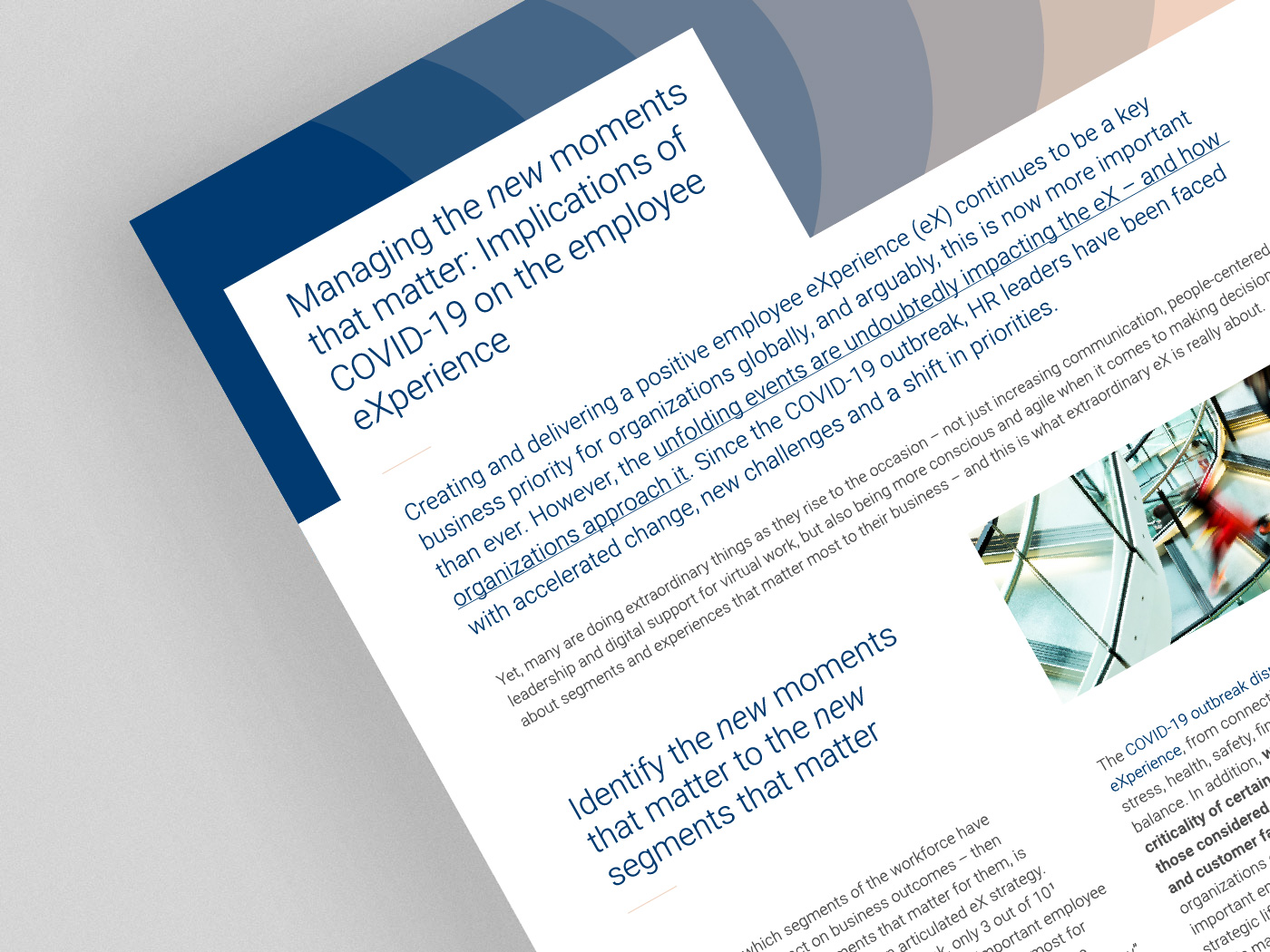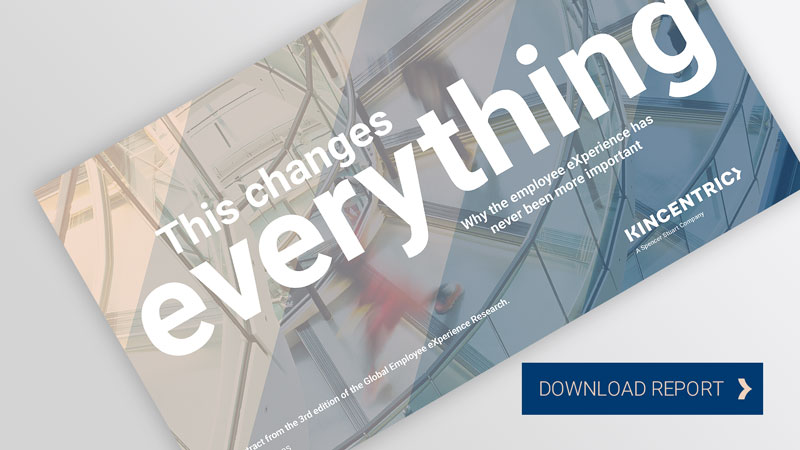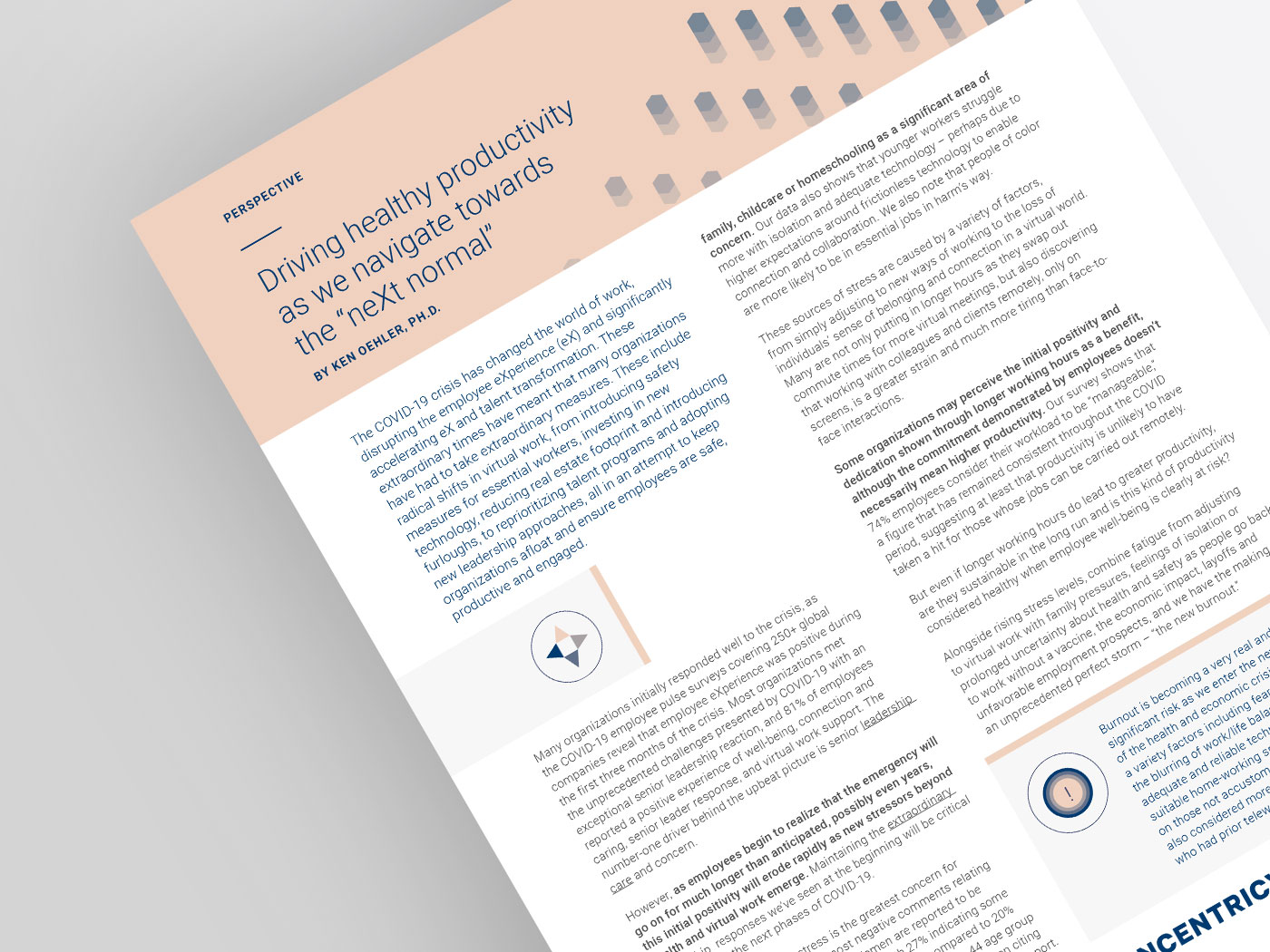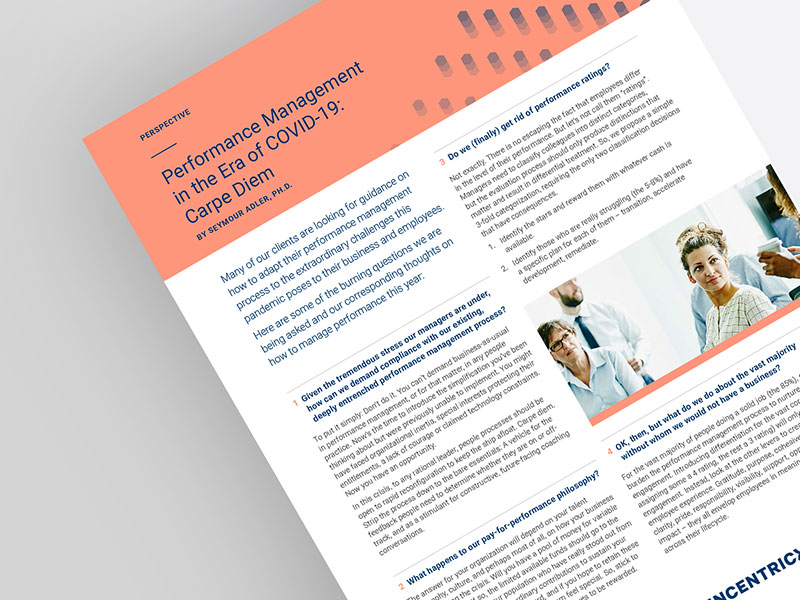
Creating and delivering a positive employee eXperience (eX) continues to be a key business priority for organizations globally, and arguably, this is now more important than ever. The unfolding events of the COVID-19 outbreak are undoubtedly impacting the eX – and how organizations approach it. Since the pandemic began, HR leaders have been faced with accelerated change, new challenges and a shift in priorities.
Yet, many are doing extraordinary things as they rise to the occasion – not just increasing communication, people-centered leadership and digital support for virtual work, but also being more conscious and agile when it comes to making decisions about segments and experiences that matter most to their business – and this is what extraordinary eX is really about.
Identifying which segments of the workforce have the greatest impact on business outcomes – then understanding the moments that matter for them, is a crucial first step towards an articulated eX strategy. Right before the pandemic outbreak, only 3 out of 101 organizations had identified their most important employee segments and the ”moments that matter” the most for these key segments. The chart below displays the top moments and segments for ”extraordinary” organizations that are delivering an intentional and differentiated eX. Performance management, strategic alignment and onboarding moments for high potentials, high performers and the leadership pipeline topped the list less than a year ago.
The COVID-19 outbreak disrupted the eX. The changes range from a loss of connection and the shift to virtual work to new concerns about stress, health, safety, financial wellness and work-life balance. In addition, we have seen the rise of the criticality of certain segments like virtual workers and those considered to be essential like many blue collar and customer facing employees. In 2019 just 8%2 of organizations considered remote workers to be the most important employee segment; well-being was rated as a strategic lifecycle stage for 20%2 of organizations, and crisis management was considered key by just 4%2 – figures that have no doubt changed in recent weeks.
Aspects of the eX that may have been an afterthought less than a year ago shifted dramatically within days. Companies that were able to pivot and quickly refocus their priorities toward remote and essential workers segments, and their experience of wellness, human connection, decision speed and virtual technology, have managed better to date and will likely be better positioned for recovery.
The pandemic also has unforeseen diversity and inclusion implications for specific employee segments. At the epicenter of this crisis, women make up a majority of the essential workers segment and women of color are more likely to be doing essential jobs than anyone else. Working mothers in particular face enormous pressure to juggle work and family life. The increased household demands and parenting responsibilities with school and childcare closures are like never before, creating many challenges that are affecting their well-being and ability to engage effectively at work.
The chart below shows which employee segments and lifecycle moments/topics extraordinary organizations focused their efforts on most in 2019, highlighting the COVID-19 implications on shifting priorities with emerging segments and moments.
Top strategic segments for extraordinary organizations to understand and improve the employee eXperience in 20192
Emerging segments in 20203
Top moments most important to extraordinary organizations’ talent strategy in 20192
Emerging moments in 20203
In addition, business impacts of the pandemic, such as increasing numbers of furloughs and layoffs mean that the ”exit experience” will become more important than ever. How companies keep in touch with these employees will be critical to ensuring that these talents will be willing to return once recovery begins. Last year 15%2 of organizations focused on leavers and only 5%2 on ”boomerangs” (returning employees). A conscious and sensitive off-boarding approach that spans from exit, through alumni to the re-boarding experience of boomerang colleagues will be crucial in ensuring business continuity.
COVID-19 has significantly accelerated the eX practices for many organizations. The crisis forced immediate decisions and actions, as many virtual policies, programs and technologies that were optional or planned for the future were put into practice overnight. The events have also placed extraordinary demands on HR, leaders and managers as they had to (and still have to) manage new moments that matter for employees. Progressive organizations have been setting the bar high in how they are making eX happen and it’s working. Our data from a sample of recent COVID-19 employee pulse results across global organizations in April 20204 provide some lessons:
 Caring and compassionate leaders.
Caring and compassionate leaders.
For many organizations, the pandemic has re-humanized the eX through a focus on well-being over the KPI of engagement. Our employee data shows that senior leaders demonstrating care and concern and making employees hopeful for the future have the biggest impact on employee well-being in the current situation – and 3 out of 44 employees rated these aspects positively. Caring, concern and optimism will be indispensable leadership skills for business continuity and recovery as we start moving towards a post-COVID world.
 Agile and employee-centric HR.
Agile and employee-centric HR.
HR leaders also had to respond in an agile way, while rethinking roles and responsibilities across the HR operating model at lightning speed. As many as 85%4 of the employees feel that their organization has communicated clear policies and guidelines to assist colleagues during the COVID-19 outbreak, and 82%4 are positive regarding the speed and quality of decisions taken. Sustainability of these achievements will be vital for managing the eX through to recovery. HR will have to lead the implementation toward the new normal and make sure that these moments are transformed into a lasting redefinition of work and working relationships.
 Supportive and connecting managers play an instrumental role in creating a differentiated eX – especially during present times of uncertainty. They are the organization’s direct link to employees and they have to be enabled to inspire, elevate, connect and remove friction for employees on a daily basis – especially in the virtual environment. Several organizations were successful in making that leap as 89%4 of employees feel supported by their manager in the current situation and 88%4 think their manager cares about them as a person. In order to sustain these favorable perceptions, companies have to consider the human experience of being a manager and focus on their specific needs to ensure that this link is not broken. Empathizing with managers, co-creating solutions with them that make their jobs easier and keeping them motivated will ensure the delivery of a better employee eXperience in these critical times, and beyond.
Supportive and connecting managers play an instrumental role in creating a differentiated eX – especially during present times of uncertainty. They are the organization’s direct link to employees and they have to be enabled to inspire, elevate, connect and remove friction for employees on a daily basis – especially in the virtual environment. Several organizations were successful in making that leap as 89%4 of employees feel supported by their manager in the current situation and 88%4 think their manager cares about them as a person. In order to sustain these favorable perceptions, companies have to consider the human experience of being a manager and focus on their specific needs to ensure that this link is not broken. Empathizing with managers, co-creating solutions with them that make their jobs easier and keeping them motivated will ensure the delivery of a better employee eXperience in these critical times, and beyond.
The responses of employees to date have been relatively positive, but this will likely be more and more difficult to sustain with prolonged stress, isolation, concerns about health or economic contraction. However, as we have seen to date, those who focus on the moments that inspire, elevate, connect or remove friction (the elements that create great eXs) stand a greater chance to unlock the passion, motivation and engagement to navigate through the next phases of returning to work.
The pandemic has accelerated measurement practices as well, from a frequency, topic and approach perspective. We have helped hundreds of organizations pulse employees about the COVID-19 experience in the month of April alone. Prior to the pulses, most companies had already made decisions to close offices, had leadership town halls and introduced virtual work – the pulses have been a check-in to help leaders understand how things are going and how they might adjust after actions have been taken (act-listen-adjust). This is dramatically different from the listen-analyze-action plan approach seen in many annual surveys or engagement pulses on repeat.
The lesson for your measurement strategy here is that focusing on timing, sample and moments that matter can help accelerate leadership and organizational impact. For example, if companies have an annual survey in December with no targeted pulsing in between, the weekly and monthly gyrations of the COVID-19 experience could be missed entirely. Further, pulses that only examine generic engagement topics and an engagement outcome could entirely miss the importance of well-being, stress, leadership caring, personal connection and virtual technology on the eX.
Fast forward to the year 2021, when hopefully COVID-19 concerns are less prominent – will we apply a measurement approach to the moments that matter to the segments that matter as per the chart above (i.e., imagine a pulse targeted to the re-boarding experience of boomerang colleagues or on how HR and managers can better design and manage the performance management process for high potentials)? We probably should.
These extraordinary times have sparked extraordinary actions from many organizations – and we have seen extraordinary impact on the eX in the short-run. We are hearing a lot that COVID-19 could be an accelerant to change in terms of culture, leadership and virtual practices. In reality, many organizations have already begun that acceleration through their extraordinary leadership actions.
The real challenge will be to apply the discipline of embedding these radically employee-centric approaches to ongoing strategy, delivery and measurement as leaders will be faced with the next phases of the COVID-19 crisis as the economic, health and workplace context continues to evolve.
German Translation | Lesen Sie auf Deutsch
Portuguese Translation | Leia em português
Spanish Translation | Lea en español
1 - Kincentric eX dialogue pulse, conducted in February 2020, 146 organizations from over 15 markets
2 - Kincentric Global Employee eXperience Report 2019, 1324 organizations globally
3 - Based on observational research March-May 2020
4 - Kincentric COVID employee pulses, end of April 2020 snapshot, over 50,000 respondents from 15 organizations across the globe
We would like to thank Reka Bakos, Ken Oehler Ph.D. and David Torok for contributing their insights to this article.



Many of our clients are looking for guidance on how to adapt their performance management process to the extraordinary challenges this pandemic poses to their business and employees.